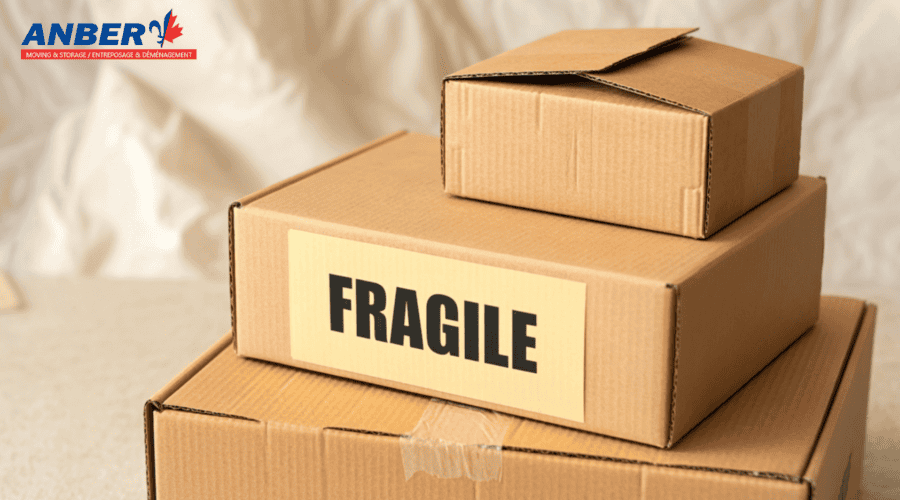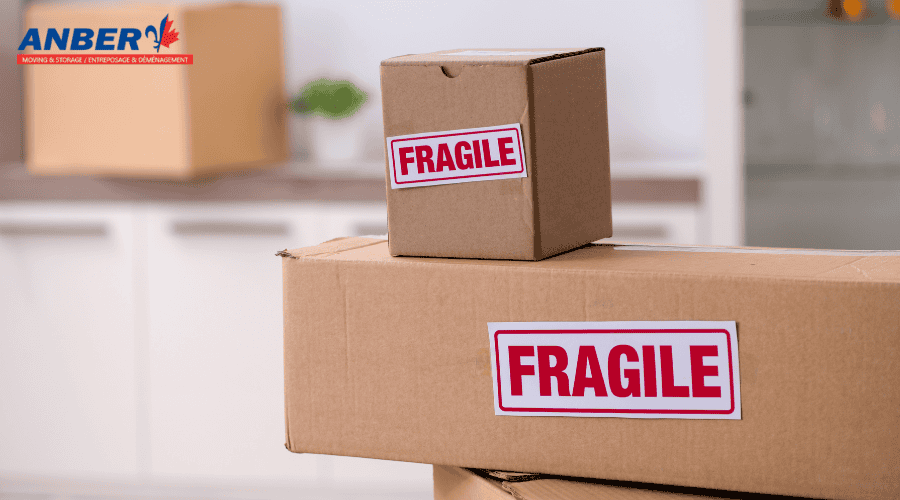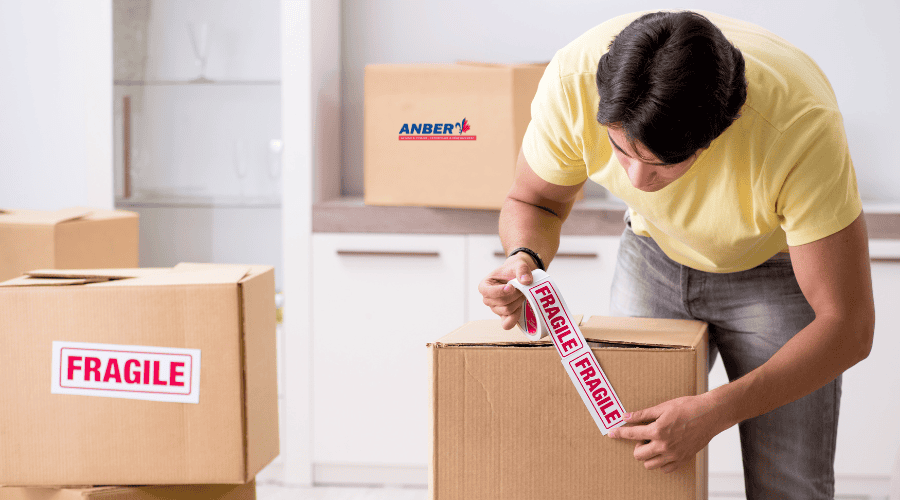Moving to a new home or apartment is exciting, but packing fragile items often brings the most stress. From delicate glassware to priceless antiques, these items need extra attention to ensure they reach your new home intact. When you choose moving services Montreal, you gain more than just a team to transport your belongings—you also benefit from professional guidance on how to handle your fragile possessions.
This blog explains every step you need to know to pack fragile items properly, from choosing materials to coordinating with residential movers.
Why Focus on Fragile Packing?
Packing fragile items isn’t just about convenience—it’s about protecting memories, avoiding financial loss, and reducing stress. Whether you’re moving across the street or across the city, fragile items face risks from shifting boxes, sudden jolts, and even changes in temperature.
-
Emotional value: Family heirlooms or gifts hold sentimental importance that can’t be replaced.
-
Financial value: Electronics, décor, and luxury items can cost hundreds or thousands to repair or replace.
-
Time savings: Proper packing means less time dealing with damage claims or searching for replacements later.
With the help of moving services in Montreal, you can avoid these headaches. Their experienced teams know how to handle fragile items and advise you on the safest packing techniques.
Materials You’ll Need
High-quality materials are essential to keep fragile items safe during your move. Cheap or flimsy packing supplies can cause damage even if you handle everything carefully. Here’s a breakdown of what you’ll need and why:
-
Sturdy boxes in different sizes: Small, strong boxes prevent fragile items from shifting during transport.
-
Bubble wrap or foam sheets: These provide cushioning to absorb shocks.
-
Packing paper or plain newsprint: Wrap delicate items without ink transfer or scratches.
-
Heavy-duty packing tape: Secure your boxes tightly to prevent accidental opening.
-
Scissors or a box cutter: Use sharp tools carefully for quick and clean cuts.
-
Markers for labeling: Write “FRAGILE” and item descriptions on each box for clear handling instructions.
-
Dividers: Perfect for separating glasses, vases, or other cylindrical items.
-
Towels or blankets: Extra padding for larger, awkward items like mirrors or small appliances.
Investing in durable materials now saves you from potential loss or costly repairs later.
Step-by-Step Packing Process
1. Prepare Your Workspace
A clutter-free and organized workspace sets the tone for a smooth packing experience. As mentioned in our blog, 10 Time-Saving Tips for a Smooth Residential Move, clearing off a sturdy table or countertop and laying out all your materials in advance ensures you have enough room for wrapping and boxing, so you’re not scrambling midway.
Pro tip: Avoid packing directly on the floor. Items are more likely to slip or collect dust. Use a table or elevated surface to stay comfortable and organized.
2. Wrap Items Individually
Individual wrapping is the most critical step in protecting fragile belongings. Each item needs its own layer of protection to avoid direct contact with other items.
-
Small items (mugs, cups, figurines): Wrap in plain paper, then add a layer of bubble wrap for added shock absorption.
-
Plates: Stack them vertically like records, not horizontally, with paper between each plate. Wrap the stack securely to prevent shifting.
-
Oddly shaped items (vases, sculptures): Fill hollow spaces with paper or foam to stabilize them. Wrap the exterior securely to protect from scratches.
-
Electronics: If you still have the original packaging, use it. If not, double-wrap and secure the cords separately to avoid tangling or damage.
3. Use the Right Boxes
The size and strength of your boxes matter. Overloading a box or using one that’s too big increases the chance of items moving and breaking.
-
Use smaller boxes for fragile items to prevent excess shifting.
-
Reinforce box bottoms with extra packing tape to hold the weight.
-
Place heavier items at the bottom and lighter, more delicate items at the top.
-
For tall, narrow pieces, choose boxes that allow upright storage to reduce pressure points.
4. Cushion with Care
Cushioning prevents movement inside the box. Create a secure, shock-absorbing base by lining the bottom with crumpled paper, foam peanuts, or bubble wrap. Once the items are in, fill every gap, including the sides and top.
When the box is gently shaken, nothing should move. If you hear or feel shifting, add more padding before sealing.
5. Use Dividers Where Needed
Divider inserts are game-changers for transporting sets of fragile items, such as stemware or bottles. They keep each piece separated while still providing cushioning. Wrap each item individually before placing it in its divider space for maximum safety.
6. Label Boxes Clearly
Clear labels help you and the residential movers know which boxes need extra care. Mark boxes with “FRAGILE”, “THIS SIDE UP,” and even brief descriptions of what’s inside (e.g., “Glass Kitchenware”).
This step speeds up unpacking and helps movers position boxes properly during transport.
7. Loading Strategy
How you load the moving truck can make or break your packing efforts. If you’ve hired moving services in Montreal, coordinate with the team to ensure:
-
Fragile boxes are loaded last and placed on top.
-
Boxes are secured so they don’t shift during transit.
-
Nothing heavy is stacked on fragile boxes.
This collaborative approach minimizes the risk of damage, even during bumpy rides or quick stops.
Quick Fragile Packing Tips
For a fast reference, here’s a recap of key tips:
-
Invest in sturdy boxes and quality wrapping materials.
-
Wrap each fragile item individually to avoid direct contact.
-
Add cushioning at the bottom, sides, and top of each box.
-
Use dividers for glasses or bottles to prevent collisions.
-
Label every box clearly with “FRAGILE” and handling notes.
-
Pack fragile boxes last to ensure they’re on top in the truck.
-
Work closely with movers to confirm careful handling.
Tips for Working with Residential Movers
Professional residential movers can make a huge difference in how safely your fragile items are handled. To get the most value:
-
Communicate openly: Show movers which items are fragile and explain how they’ve been packed.
-
Highlight priority boxes: Let them know which boxes to load carefully and unload first.
-
Ask about insurance: many companies offer coverage for valuable items in case of accidental damage.
-
Check for packing support: Some movers supply additional materials or professional packing services, saving you effort and time.
-
Stay involved: supervise loading and unloading so you know your items are handled properly.
After the Move: Unpacking Fragile Items
The care doesn’t stop when you arrive at your new place. Unpack fragile items with the same attention you used while packing:
-
Place boxes in a secure spot before opening.
-
Use a cutter carefully to avoid damaging items.
-
Remove wrapping slowly, inspecting each piece as you go.
-
Dispose of packing materials responsibly or save them for future use.
-
If you notice damage, document it immediately and contact your mover to report the issue.
Why Choose Anber Movers for Fragile Packing
At Anber Movers, fragile packing isn’t an afterthought—it’s a priority. Their moving services Montreal team understands that every move is unique and that protecting your valuables requires skill and attention to detail.
When you book with Anber Movers, you get:
-
Experienced teams trained in handling delicate and high-value items.
-
Access to quality packing materials and tools.
-
Guidance on packing strategies if you prefer to handle some items yourself.
-
Safe loading and unloading processes designed to minimize risk.
Click here to book your move with Anber Movers today.
Final Thoughts
Packing fragile items doesn’t have to be overwhelming. With the right materials, proper techniques, and support from trusted moving services Montreal, you can feel confident your valuables will arrive safely.
Whether you handle the packing yourself or rely on experienced residential movers, the key is careful preparation and communication. Protecting your fragile items now ensures your move is less stressful and your new home feels ready to enjoy from day one.
Safe and happy moving!



